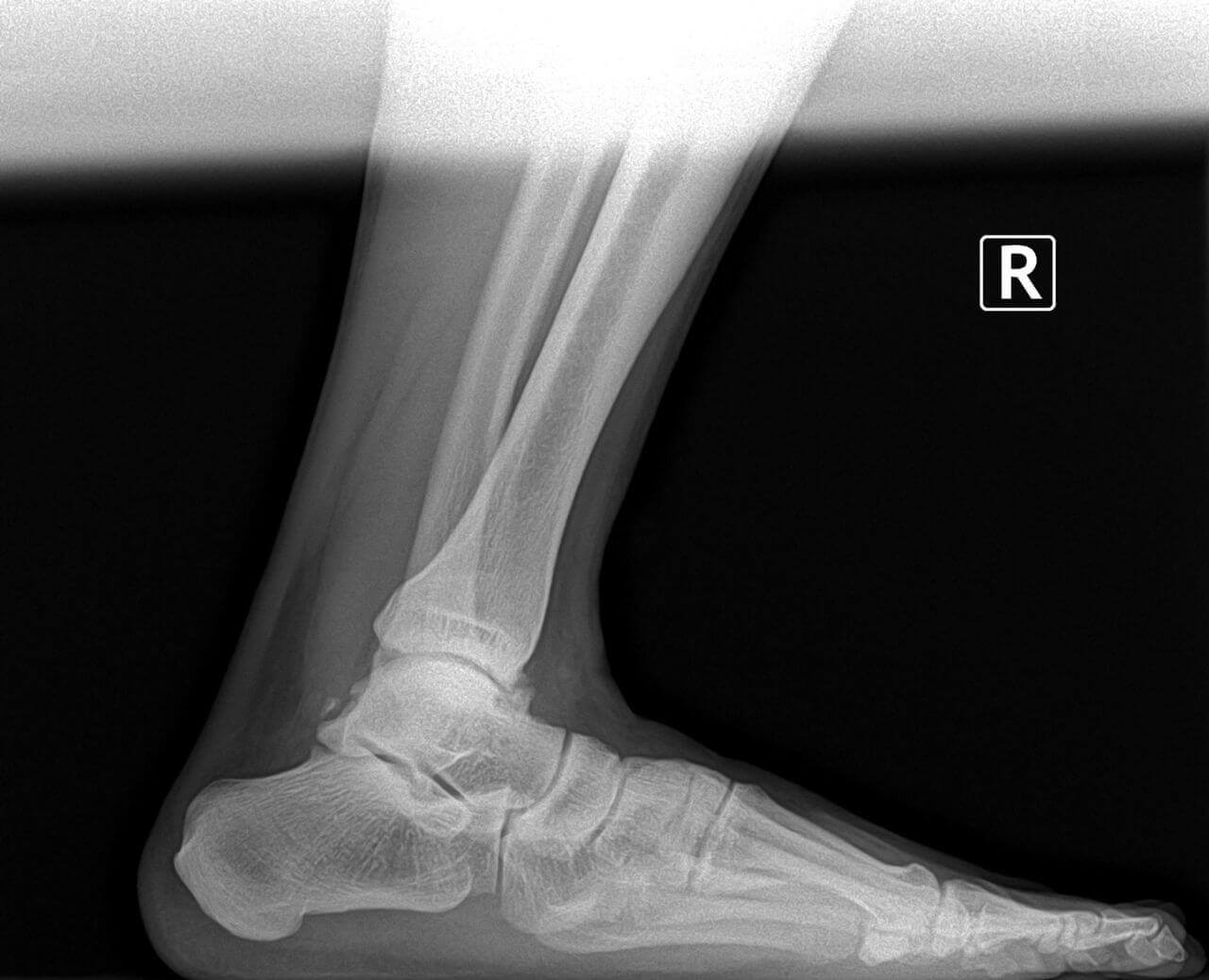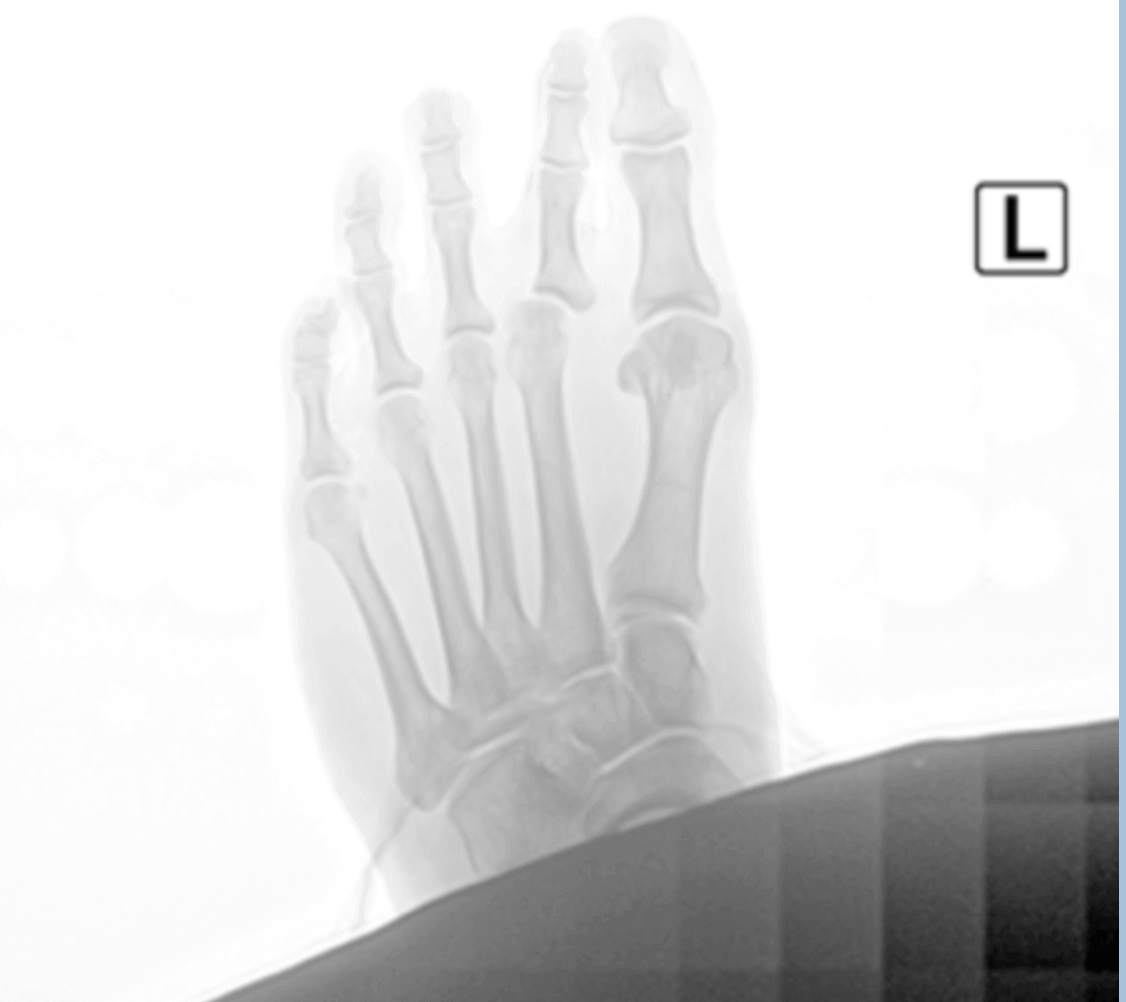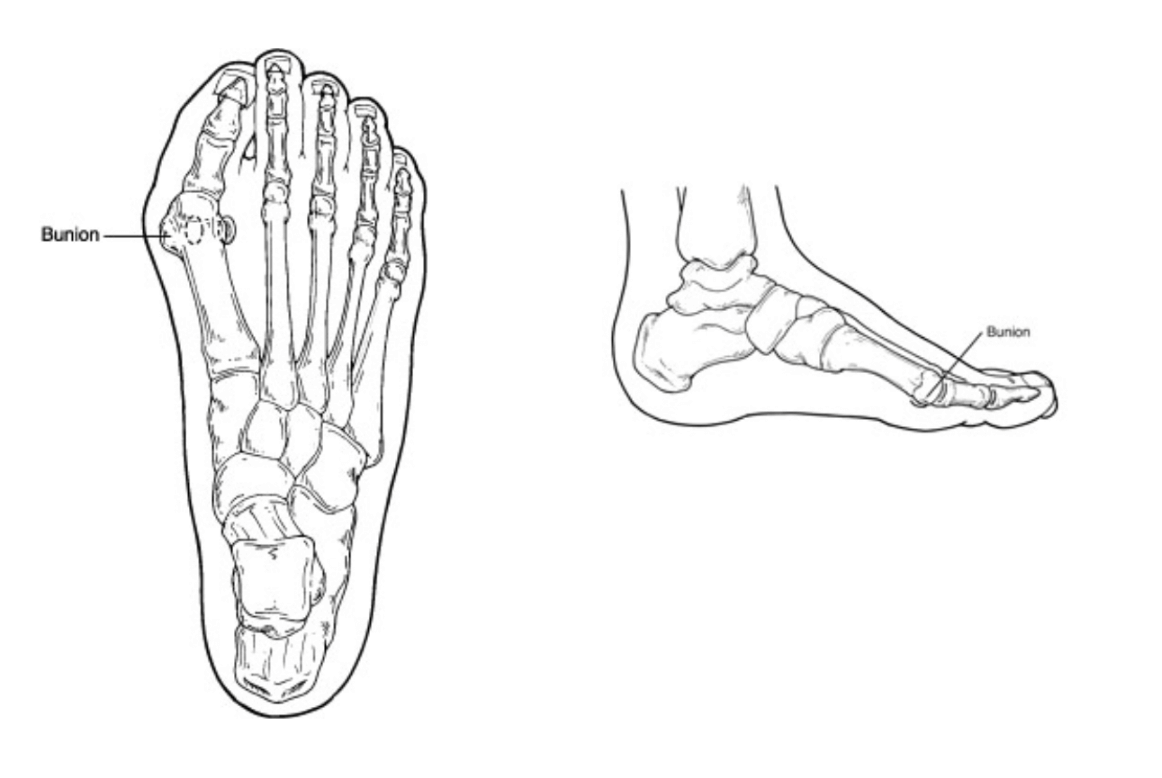bunion issaquah
Displaying items by tag: bunion issaquah
Dr. Brandon Nelson, A Board-Certified Surgeon, Discusses the Austin Bunionectomy

What is a bunion?
A bunion is a genetically inherited foot structure that leads to migration of your 1st metatarsal. The bunion itself is where the 1st metatarsal begins to protrude out the medial or inside of the foot. Nothing actually grows or forms new bone, but it is the deviation of the normal bone that creates the bunion. The bunion can continue to rotate and get larger until it creates hammer toes of the other digits. The bunion eventually causes pain and deformity that needs to be addressed surgically.
One of the most common bunion surgeries is a head procedure. This involves cutting the metatarsal bunion and the end closest to the toe. The bone is then shifted back into place and held with a screw. This procedure works well for mild to moderate bunions and has a fairly quick recovery. The patient can walk the entire time and return to activities much sooner than other procedures.
Outcomes:
The typical bunion surgery has a 5% recurrence rate. The majority of the bunions that return are from not following post-op instructions or other foot factors. It is important to have your surgeon address all other components of your foot and procedure selection should be based on these findings. An x-ray is vital for procedure planning and an overall foot exam to help determine what other pathologies are present.
If you are suffering from bunion pain make an appointment today and I can help you get back to the activities you enjoy!
Give us a call at 425-391-8666 or make an appointment online today.
Dr. Brandon Nelson, A Board Certified Surgeon, Discusses Everything You Need To Know About Bunion Surgery

Thinking about bunion surgery can be overwhelming. I like to help my patients at least a week before surgery so we can prepare together. It is important to think about all the factors that can influence your outcome. I have patients make a list of questions before we meet and advise them to bring a family member or friend to their pre-operative appointment.
A few suggestions to think about before surgery are:
1. Set up a general operation center, i.e the couch with everything you need
2. Think about how you will use the shower and bathroom
3. Supplements, these can be important, examples are calcium and collagen
4. Exercise plan, what can you still do?
5. Review your timeline, how long will you be down?
6. Do you have all your post-operative appointments?
7. Consider side effects of mediations, constipation/nausea
8. Make and freeze a few meals
This list is not exhaustive but it is a good place to start. The majority of your questions will be answered at your pre-operative appointment.
The Surgery itself:
Bunion surgery usually takes about 1 to 2 hours and is done in an outpatient setting. Our practice is set up to provide the most convenient and cost-effective approach to your bunion surgery by having a surgery center on site. The day of surgery most patients will have nothing to eat or drink 8 hours before surgery and will show up at the practice about an hour before their operation.
You will see the surgeon again and meet your anesthesia provider. Next you will be brought into the operating room and an IV will be started and you will wake up after the surgery is completed. Typically, most patients have a nerve block that will last about 24 hours. You will then have your first post-operative appointment with 4-10 days.
Recovery:
Recovery really depends on the procedure selected. All our bunion surgery patients can walk after surgery. We also help our athletes stay in shape by helping them tailor a recovery period workout. Recovery can be influenced by your diet and how well you follow the post-operative course.
If you are struggling with bunion pain we are here to help! Give us a call 425-291-8666 or make an appointment online.
Dr. Brandon Nelson, A Board-Certified Bunion Expert, Discusses When To Consider Bunion Surgery

Bunions can be very difficult for many patients. They can often be extremely uncomfortable and make walking unpleasant. Many people try going to larger shoes or wearing toe spacers or straps and padding. This can provide temporary relief however often make the bunion increase in size as larger shoes allow more room for the bunion to grow. The question I hear often is: “When do I have my bunion fixed?”.
When do I have my bunion fixed?
The answer for this is complex and is dependent on each patient and their lifestyle. I think the most important question is does the bunion impact the lifestyle you enjoy? If the answer is yes, it is time to fix it. If your bunion stops you from walking, hiking or even fitting in shoes the time has come.
How is my bunion fixed?
Bunion surgery has significantly progressed in recent years. The majority of bunions can be fixed with a simple procedure that takes less than 2 hours. Most often these can be done in our office and do not require any trips to the hospital. It is very common to be able to walk after surgery and maintain an exercise program with some modifications.
Is it painful?
I think it is important to realize all surgery can cause pain. The majority of our patients do very well with pain control. We have fixed 1000’s of bunions and have developed great post-operative pain control techniques.
Will my bunion come back?
The most important part of bunion surgery is procedure selection. Not all bunions are the same and therefore not all bunions can be fixed with the same procedure. It is vital to have and x-ray and a thorough evaluation of your foot. I also believe having somebody operate on your bunion that has vast experience with bunion surgery is something to consider as well.
I hope this was helpful and answered some common questions. You could be a candidate to have it fixed or even a candidate that we can employ some conservative measures. Please give us a call at 425-391-8666 or make an appointment online.
Dr. Brandon Nelson Discusses When the Best Time to Have Bunion Surgery Is

Surgery can be quite a bit to think about. Patients need to make work arrangements and plan with family and sometimes even friends. Especially if it is your first time having surgery it can feel like a lot. We at Issaquah Foot & Ankle Specialists have helped so many patients with surgery that our process makes it extremely easy and relaxing. We will help every step of the way. We provide a surgical binder that has everything you need and will make sure that you get all the assistance you need to make the process feel simple.
I think the most important part of planning when to have surgery is simply preparation. I tell most of my patients to think ahead and figure out when the slowest time of year is for you with both family and work. This is not always possible so the good news is we are here to help. The majority of procedures will allow patients to get back to activities in a few days. We have years of experience and can provide answers to any questions or concerns you may have.
The surgical process is easy as well. We have an onsite surgery center and most of the time you will be at the office for just a couple hours. We have dedicated rooms and staff that will assist you the entire time. If you are contemplating having your bunion fixed or having your neuroma or hammertoes corrected, we can help. Give us a call today at 425-391-8666 or make an appointment online.
Dr. Brandon Nelson, a Board Certified Bunion Expert, Discusses Bunion Surgery and Covid-19

Bunion surgery and even surgery in general requires planning. Covid-19 has created a new work environment for a lot of people in Washington State. A larger percentage of people are working from home and have decided this provides an opportunity for them to have bunion surgery.
Surgery in general can be challenging, trying to find the correct time and date, planning for the recovery and taking time off work. However, we have seen quite a few people this year that have found working from home to be an advantage for surgery recovery. Without the need for a commute recovering at home and working has seem to work well.
I agree with these patients as foot and ankle surgery often requires modification to one’s work schedule. People working from home have a great opportunity to get the surgery they have been putting off. I think that this is a silver lining of Covid-19. I have personally seen our surgical load increase this year as people want to have elective surgeries they have been procrastinating.
I still think it is important to plan ahead. I like to provide my patients with all the information they require so they can prepare and make their recovery easier. Being preparde can make the surgical process much easier. Getting your house ready, making sure you have a way to get around, setting up a work station all these little tips make a big difference.
If you have a bunion or have been waiting to have surgery on your foot or ankle now is a great time. Give us a call today at 425-391-8666 or make an appointment online.
Dr. Timothy Young, A Board Certified Bunion Surgery Expert Talks About Avoiding Post-op Infections

Complications from foot surgery are not common and many of them can be avoided with careful planning and following your doctor’s recommendations. Keeping your foot dry after surgery and until after your sutures are removed is recommended. During the first few days after surgery the incision site will still create a pathway for bacteria to get into the deeper tissue layers.
Sutures also penetrate a deeper layer and if they get wet or are contaminated they could create a direct pathway for bacteria to travel deep and cause an infection. We do not recommend allowing the incision site to get wet with bathing until after sutures are removed. Use a special cast protector for bathing and make sure that it is on correctly. A garbage bag with rubber bands may leak and fill with water-not good! Follow your doctor’s advice on wound care. At our clinic, after surgery we change our patient's dressings at our clinic to make sure it is done using sterile technique, for example a postop infection is certainly going to be more of a risk if you have an open wound or one that still has sutures and you get your foot wet such as bathing.
If you have questions about bunion surgery, and would like a consultation please let us know.
Give us a call today at 425-391-8666 or make an appointment online.
Dr. Nelson Discusses Bunion Pain Relief
.jpg)
Bunions can be a very difficult pathology to deal with as a patient. The majority of patients that have bunion pain are typically female between the ages of 25-55. Etiology of the bunion remains a mix of genetics and environmental factors like shoes and activity levels. Bunions can develop on the inside or the outside of the foot. Bunion on the inside of the foot can also be called metatarsus primus varus or hallux abductovalgus. Bunion on the outside of the foot is called a tailor’s bunion. Bunions can be extremely painful with activities especially as people change activities like beginning to run or do exercises that require a lot of movement.
There are many different options to relieve bunion pain. The options are categorized as surgical or conservative. From a surgical standpoint it depends on the severity of the bunion as to which procedure is selected as well as the recovery time is correlated to this. Conservative care can be useful for many patients that have a new onset of bunion pain or are not ready to have it fixed surgically. There are prescription orthotics that can be specifically used to address bunion pain as well as lubricating injection series to reduce the painful joint. I get a lot of questions about conservative measures about strapping and padding for the bunions however these measures do not typically work and will not reverse a bunion.
If you have bunion pain and would like to discuss either conservative or surgical measures we are here to help. Give us a call at 425-391-8666 or make an appointment online today.
Dr. Brandon Nelson Discusses the Best Bunion Surgery Options

Bunions can be quite painful and difficult to manage. Most patients experience pain along with the bunion itself. However quite a few patients can have foot pains in other locations secondary to the bunion. We see a lot of patients that have strapping, bracing and using shoe gear accommodations all to no avail. These are hard modalities to maintain and do not do anything to correct the bunion deformity. The only long-term solution to fix of bunion is surgical. However there are some other options that can alleviate the pain and slow the progression of the deformity.
The surgical procedures available for bunion correction usually can be characterized as a head or base procedures. Head procedures are done at the metatarsal head or towards the toes. Base procedures are done at the base of the metatarsal towards the metatarsal cuneiform joint. The type of procedure that is best for the bunion itself is correlated with a radiographic examination and physical examination foot, the other factors to consider are lifestyles and age of the patient. I recommend anybody evaluating bunion surgery to make an appointment to be evaluated and make sure you have the best possible outcome.
Dr. Brandon Nelson Discusses the Best Options for Bunion Surgery

Contemplating bunion surgery can be an overwhelming task. Often times we see patients that have visited multiple practitioners. The best piece of advice I can give my patients is to be comfortable with the physician. There are many different types of bunion surgeries. The majority of bunion procedures can be broken up to either head or base procedures. The way to think about it is really large bunion deformities as base procedures and smaller bunion deformities can utilize head procedures.
The most common head procedures performed are the Austin bunionectomy or some form of a Chevron osteotomy. The most common of base type procedure is the Lapidus or arthrodesis of the metatarsal cuneiform joint. The procedure performed really dictates the postoperative recovery. The majority of patients we see are walking within the first week and usually do not take more than 3-5 days off of work. Another great things about Issaquah Foot and Ankle Specialists is we have an on-site surgery center which really reduces the cost and time. If you are contemplating bunion surgery we would happily discuss it with you and help you come up with the best available options.
Give us a call at 425-391-8666 or make an appointment online today.
Dr. Brandon Nelson Discusses How to Get the Most Out of Your Bunion Surgery

At Issaquah Foot and Ankle Specialists we average about 3-5 bunion surgeries every week. We find a lot of variation in bunion deformities from pediatrics bunion to Tailor's bunions. Bunions can have many different causes and it’s important to address all these deforming forces in order to maximize outcomes. Some people benefit from what's called a distal or metatarsal head procedure, others will need a more proximal or base procedure.
The majority of bunion procedures we performed patients are usually walking the first day after surgery. The limiting factor is usually swelling or pain at the operative site. We try to encourage patients to ambulate early and do functional range of motion quickly to maximize outcomes. The majority of bunion surgeries we provide at our clinic have great and quick outcomes. If you have bunion pain additionally we have many conservative options that we can provide for patients.



